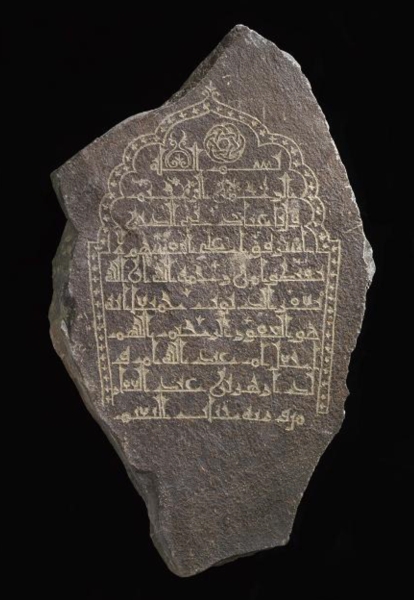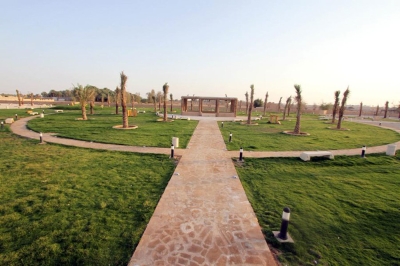
The Basalt Tombstone is an archaeological commemorative inscription carved on a gray basalt stone in excellent condition. It was discovered in Makkah al-Mukarramah Province in the Kingdom of Saudi Arabia. It measures sixty-nine cm in length and thirty-one cm in width. The tombstone is framed with an intricately designed scalloped arch and adorned with vegetal motifs, including a quadrilateral and trilobate rosette, imaginative ornamental elements, and a circular pattern enclosing a beautiful star design. This inscription is notable for its ornamental vegetal decorations and for mentioning only the kunya (nickname) of the deceased without revealing her full name. The inscription begins with the Basmala (In the name of Allah), followed by a supplication inspired by Verse 85 of Surat az-Zumar and Verse 53, and then a prayer for forgiveness for the deceased, "Umm Abdullah, the mother of the son of Azhar Bin Abdulghaffar." The text is arranged across ten lines with letters characterized by vegetal motifs, carved with exceptional geometric precision, giving the entire piece an artistic quality.
History of the tombstone
The basalt tombstone dates back to the tenth century and was used as a grave marker.
It is registered under the number 314716 and is preserved at King Fahad National Library in the capital, Riyadh. It was among the archaeological discoveries selected for display in the Saudi Archeological Masterpieces Through the Ages Exhibition, held at the Louvre Museum in Paris, the French capital in 2010. The three hundred diverse original pieces crafted from various materials and spanning different historical periods originate from various provinces across Saudi Arabia. The pieces represent three chronological eras: Prehistoric artifacts, pre-Islamic artifacts, and Islamic-era artifacts.
Significance of the tombstone
The ornamental Kufic script, framed by a decorative frieze featuring abstract vegetal motifs, showcases the calligrapher's creativity and expertise in executing the calligraphy. It also reflects the development of Arabic calligraphy over time. Furthermore, the text reveals the writer's profound faith and their supplication to Allah the Almighty for pardon and forgiveness.
Related quizzes
Related articles

